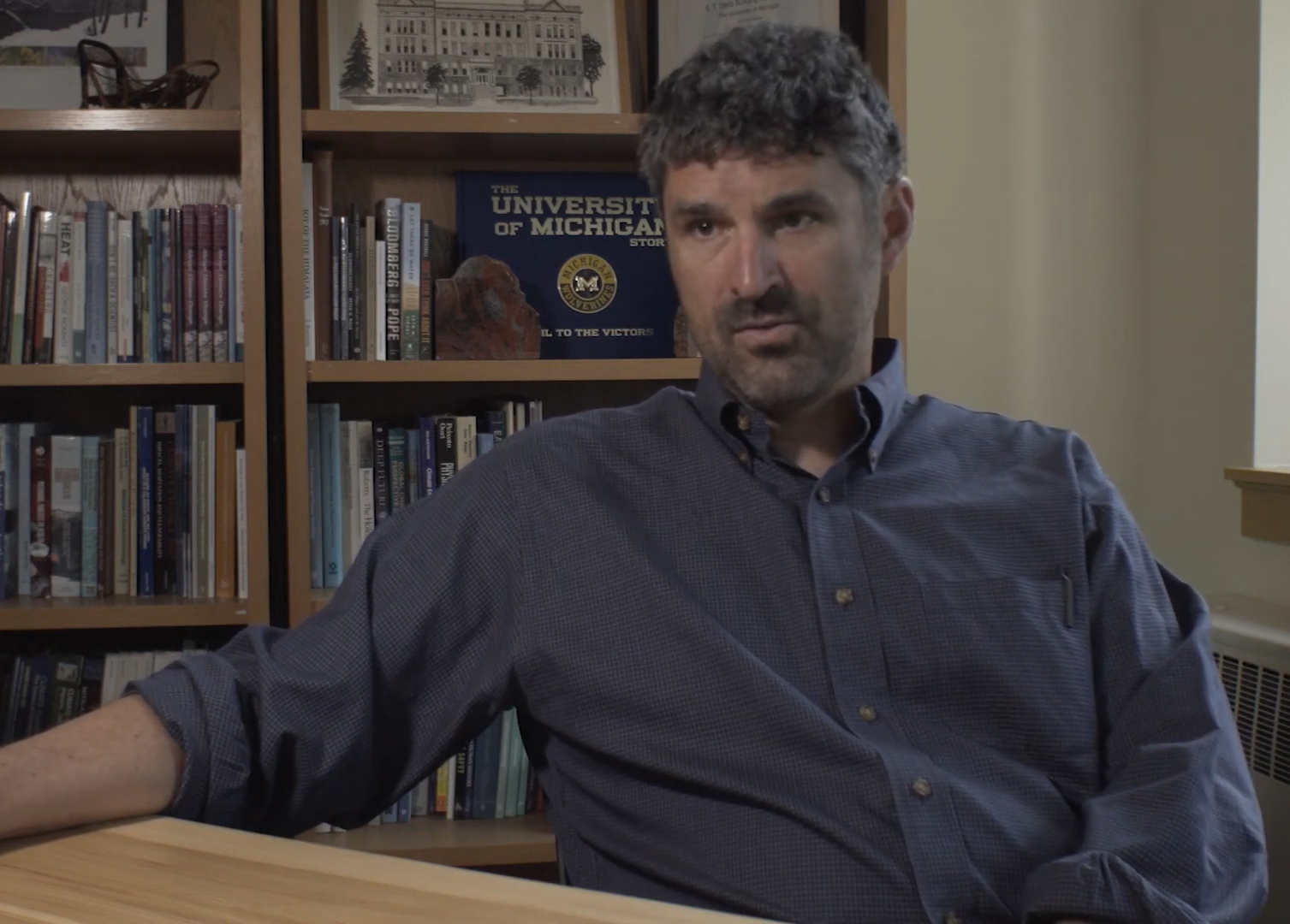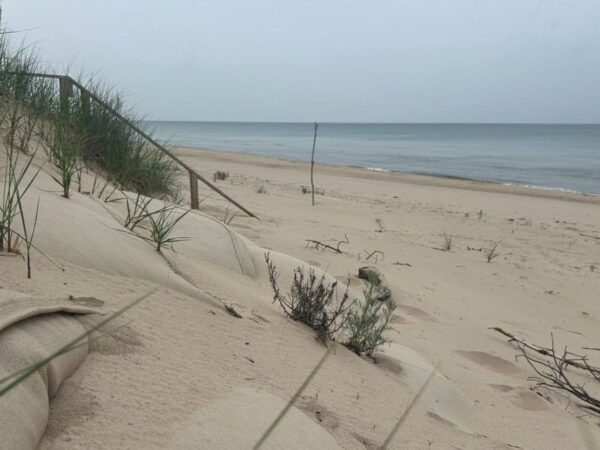
The International Joint Commission has started an early review of its Lake Ontario water management plan, overseen by a board that includes some of its most ardent critics, in response to extensive flooding and outcry from the lake’s shoreline communities.
The IJC— the international body that regulates waterways between the United States and Canada — has received $1.5 million in funding from the U.S., with an additional $1.5 million in matched funds from Canada, for the expedited review of Plan 2014.
Plan 2014 is a water level regulation plan, implemented in January 2017, for the Lake Ontario-St.Lawrence River system. It determines the flows through the Moses-Saunders Dam located on the St. Lawrence River between Cornwall, Ontario, and Massena, New York.
Plan 2014 replaced Plan 1958 D. The new plan was intended to restore the health and diversity of coastal wetlands and protect against extreme high and low water levels, while keeping consideration of ecosystem health, recreational boating, commercial navigation and hydropower production, according to the IJC.
But many municipalities and property owners along Lake Ontario’s south shore blame Plan 2014’s water regulation policies as the reason for the extensive flooding in 2017 and 2019. Others, including the IJC, cite climate change and extreme weather.
API key not valid. Please pass a valid API key.The expedited review will be managed by the IJC’s Great Lakes-St. Lawrence River Adaptive Management committee. On June 30, a public advisory group appointed by the IJC met with the GLAM committee for the first time. The meeting was held online, and there has since been two additional virtual meetings.
“The (public advisory) board currently has 16 members, and they’re from a wide variety of the stakeholders who are affected by the water levels on Lake Ontario and St. Lawrence River,” said Frank Bevacqua, the IJC’s U.S. public information officer.
According to Bevacqua, the advisory group includes representatives from shoreline property owners associations as well as from the recreational and tourism sectors, meaning the board includes some of the IJC’s loudest critics.
The expedited review has a goal of “investigating possible improvements that could be made to Lake Ontario outflow regulation activities,” Bevacqua said.
The first phase of the review will look at the decisions that can be made by the IJC when water levels are extremely high, particularly evaluating when the board has the authority to deviate from the rules of Plan 2014 in conditions of extreme water supply.
Government criticism, legal battle
The U.S. Government Accountability Office — the supreme audit institution of the federal government — recently issued a report regarding Plan 2014, in which they found that the IJC “doesn’t effectively evaluate its efforts to communicate with stakeholders about these water releases” and “hasn’t developed a comprehensive plan to assess and improve Plan 2014.”
The GAO subsequently outlined a set of three recommendations for the IJC in the report, in order for the commissioners to develop a more “robust plan for communicating and assessing Plan 2014.”
In October 2019, New York State’s Department of Environmental Conservation filed a lawsuit against the IJC over Plan 2014, demanding that the IJC compensate New York state for damage to homes and businesses during the flooding of 2017 and 2019.
Governor Cuomo reported that the state repeatedly called on the commission to maximize outflows into the St. Lawrence River to drain flooded lakefront areas, but that the commission failed to do so. Cuomo said the cost to the state from the two floods “will be easily over $1 billion when all the numbers are accounted.”
Bevacqua stated that the lawsuit is still in preliminary stages.
“New York State alleged that the IJC was negligent in how it managed the high water supplies during the 2019 flooding event.The IJC strongly disputes this,” said Bevacqua. “We filed a motion to move the jurisdiction from state court to federal court, New York state has filed a counter motion to move it back to state court. We’re awaiting the outcome of the federal court’s decision on the jurisdiction.”
Big cost to lakeside municipalities
While the GLAM committee purports that the regulation of outflows from Lake Ontario to the St. Lawrence River cannot eliminate severe impacts such as extreme weather events nor did it meaningfully exacerbate the flooding, lakeshore community organizations like Save Our Sodus argue that the IJC did not maximize outflows to the St. Lawrence River to alleviate flooding, allowing high water for extended periods of time that caused devastating damage to shorefront communities. They strongly oppose the implementation of Plan 2014 and have joined other shoreline organizations to form a “Fight Plan 2014 Coalition.”
Save Our Sodus is an organization whose primary mission is to preserve, protect and improve Great Sodus Bay, an embayment on the south shore of Lake Ontario.
According to Dave McDowell, the president of Save Our Sodus, Sodus Bay’s economy has been devastated by the flooding.
“All of our businesses have been off 30 to 50 percent for the last 3 years,” said McDowell. “One restaurant is closed, one was already closed and there’s no prospect of it opening.”
McDowell said the municipality has spent close to a million dollars, much of it reimbursed by New York state, to repair infrastructure damage from 2017 and to make the community more resilient.
“The last time the IJC used a public advisory group, they summarily ignored everything they said,” said McDowell. “So, when this was first announced I wasn’t very optimistic. However, I know three members of the current public advisory group, and they so far have all been encouraged by what they’re hearing and what they’re seeing.”
“I do believe the commissioners are listening,” he continued. “I get that it’s a complex problem because it truly is. But I also don’t understand what was wrong with the old plan. It worked just fine for 60 years. If it’s all about the environment, which I don’t believe, but if that’s what their spin was, we’ve ruined the environment with the high water in the last 3 years.”
In response to the extensive flooding, New York state issued REDI grants (Lake Ontario Resiliency and Economic Development Initiative) to provide resiliency and economic development dollars to municipalities around the lake.
“The major project that we’re doing with that money is putting in a comprehensive stormwater management system,” said McDowell. “Things were going great until COVID hit, and all the good people who work for the state now are working on COVID instead of this. So we’re struggling to get approval to go ahead and do construction. We’re told it’s not going to be cancelled, it will move forward. So we just have to keep fighting the fight.”
Save Our Sodus has united with similar organizations around the Great Lakes in an effort to form a unified front to modify or repeal Plan 2014. Their goal is to raise $500,000 to hire a law firm in Washington D.C. that will help push changes to Plan 2014 through the federal government.
Long list of criteria for making decisions
Drew Gronewold, a hydrologist at the University of Michigan’s School for Environment and Sustainability, notes the extraordinary amount of water that was in the Lake Ontario – St. Lawrence river system in 2017 and 2019.

Drew Gronewold, University of Michigan’s School for Environment and Sustainability hydrologist and associate professor (Great Lakes Now)
“The short story from my perspective as a hydrologist is that there was just far too much water in the system, in terms of rainfall, in terms of snow, and In terms of soil moisture,” said Gronewold.
“There are so many different combinations of hydrological and meteorological events that happen on a day-to-day basis across the basin. It becomes a real big challenge to try to anticipate when water levels are going to get high within a given season,” he said. ”Even without being an expert in how Plan 2014 is developed with the IJC, I think there’s always going to be some level of risk and it’s impossible to make that zero. So that’s a really important tenet to a lot of these sort of decision-making processes.”
In developing management plans like Plan 2014, Gronewold acknowledged the difficulty in multi-criteria decision making and optimizing different criteria at the same time, including but not limited to the challenges in forecasting, the timing of when ice forms on the river, ensuring water levels don’t get too high on the shoreline of Lake Ontario, making sure there’s enough water for big commercial vessels to make their same route, and ensuring enough water is passing through dams for hydropower facilities to maintain adequate power.
“Some people don’t have as much stake in what are those criteria,” said Gronewold, “or at least they don’t think they do. That’s where we start getting these sort of different perspectives on what the criteria should be and what the priority should be. And that’s what I think gives rise to some of these different perspectives on where the tradeoffs should be played.”
Find more on the IJC and high water impacts on Great Lakes Now:
Lacking Backing: Further action on Plan 2014 dependent on more funding
Single Systems: Great Lakes cities’ sewer designs mean waste in the waters
API key not valid. Please pass a valid API key.Featured image: The Moses-Saunders Power Dam spans the St. Lawrence River between Canada and the United States. (Photo by Sandra Svoboda as part of a reporting fellowship with the Institute for Journalism and Natural Resources.)




